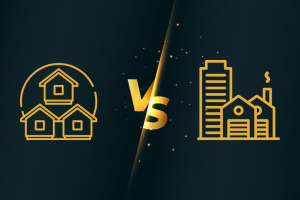There are many advantages to buying an older home, but most older homes are filled with hidden problems that can easily turn into expensive nightmares or hazards. These types of problems in old homes can crop up from the beginning of the lifespan until the home passes ownership to the new owner. Knowing these hidden problems is important for identifying them and then repairing or asking for a lower price when they are included in the purchase contract. Below are the main hidden problems you should expect when buying an old home.
List of 10 Hidden Problems in Old Homes
When considering an old home, it is crucial to be aware of hidden problems in old homes that can arise. These issues can lead to repair costs and may affect your overall satisfaction of the property.
Outdated Electrical Systems
Many times, homes still have electrical equipment installed, such as when the structure was being added. Older electrical systems lacked many important features, such as grounding, while others used shoddy wiring, electrical current that was inadequate for use by modern appliances, and overall failed to meet today’s safety standards. Rewiring an older home’s electrical system can cost anywhere from $8,000 to $15,000; so, don’t overlook electrical problems when considering a home. Look for two prong outlets, blown fuses, stained receptacles, blinking lights, and faulty fuse boxes/panels as signs that something is wrong.
Galvanized Pipes
Before the 1960s, plumbing and gas line connections in homes were made with galvanized steel pipe. Although galvanized pipes initially resist corrosion to a large extent, after decades of use, zinc-containing pipes corrode and cause rust to develop inside the pipes. This leads to reduced water pressure, water stains and colored or contaminated water. Replacing complex, old pipes with copper or PEX can cost $4,000 to $8,000. Check for leaks at pipe joints under sinks and have the home appraised before you buy it.
Asbestos Materials
Asbestos was used in some older homes for fire protection, but it was phased out of most products by the 1970s when it was realized that it could have some negative health effects. Still, homes built before 1980 may have used loose fill, insulation, siding, flooring and adhesives that contain asbestos. Although intact asbestos does not pose a serious threat to people, careless removal can cause dangerous particles to fly. Fiber removal by a professional asbestos remover can cost thousands of dollars. If you have any doubts about building materials containing asbestos, have it inspected by a professional inspector.
Lead Pipes
Like galvanized steel pipes, lead pipes corrode from the inside causing lead to leach into drinking water. Therefore, any amount of lead can be dangerous and should be treated without anyone knowing. This means any home built before 1930 is likely connected to a lead service line. Check the home inspection report for signs of lead and test the water coming out of the faucet if it is unclear how to proceed. The cost of replacing lead water pipes ranges from $4,000 to $10,000. This should also include testing for lead paint chips that are dangerous for children.
Inadequate Heating Systems
Old furnaces and boilers may still be located in homes that were built years ago; they are very inefficient with current energy prices. Ductwork also deteriorates over time, so it reduces heat efficiency. Many older systems are prone to breakdowns and therefore require constant maintenance and repairs. It costs $4,000 to $12,000 to switch from an older model furnace and central air conditioning to an energy efficient model. Before buying an older home, it is useful to undergo a home energy audit to establish all the opportunities available regarding home use.
Faulty Foundations
From cracks in the foundation to the gradual settling of certain parts, this can take a toll on an older building’s structural integrity if left unattended. Some of the symptoms to look for to spot foundation problems include sticking doors and windows, cracks in floors and walls, and visible bowing. Hire a structural engineer before you buy and expect to spend $10,000 to $40,000 or more to rebuild a severely compromised foundation.
Roof Problems
Typically, over a number of years the exterior material of the roof is affected, leaking and becoming damaged due to rain, wind and other solar factors. There are several signs that can tell you that your roof has deteriorated, these include cracks on the shingles, curling edges, spongy areas on the roof or water stains. Although some shingles may deteriorate and can be repaired, with a few exceptions, there comes a time when the entire roof may deteriorate and require a complete overhaul that can cost $10,000 to $30,000 or more.
Bad Drainage
Drainage prevents water from accumulating in the foundation areas of the home which can lead to erosion and leakage. Many older homes are built with poorly maintained roof downspouts, gutters, exterior grading and French drain systems or the systems are damaged. Flooding then increases, mold problems develop and the structure’s foundation gradually weakens. Check the overall relative exterior drainage condition thoroughly before purchasing and correct any deficiencies found.
Old Windows
Single-pane windows allow energy loss in homes, as they have little or no weatherproofing protection. Older homes with no sealant on the windows also result in expensive heating costs in addition to poor insulation. For example, it is possible to identify an air leak if the window sills and valleys are cloudy and covered with mineral residue. Replacing windows from models 15 or older costs around $15,000 to $30,000, but the investment may be worth it in the long run. However, keep in mind that if any of the windows have been replaced before, they may need to be upgraded again.
Outdated Materials
Although the structures of some older homes may be technically sound enough to be certified, specific finishes and fittings may need to be replaced for safety or to conform to people’s current way of living. Check for asbestos in kitchen and bathroom floor tiles; lead paint or galvanized pipes; very old homes may still have knob and tube wiring. Storage needs should also not be overlooked, as older homes don’t have the closets, attics, basements and garages that allow a modern homeowner to store all their belongings.
Conclusion
The extraordinary factors hidden beneath the surface remain unknown even to experienced homeowners. For instance, when it comes to reviewing an old house, never have the tendency to think that everything is fine, if you do not see signs of problems. Carefully check the electrical, plumbing and structural work and identify areas where these materials are in poor condition and some that are hazardous to human health. Secondly, it should be checked to meet the requirements of contemporary living standards and consumer amenities such as storage, energy, etc. These problems in old homes can be easily detected only if one is cautious while evaluating an old house as the problems may still be out of control at that time.


